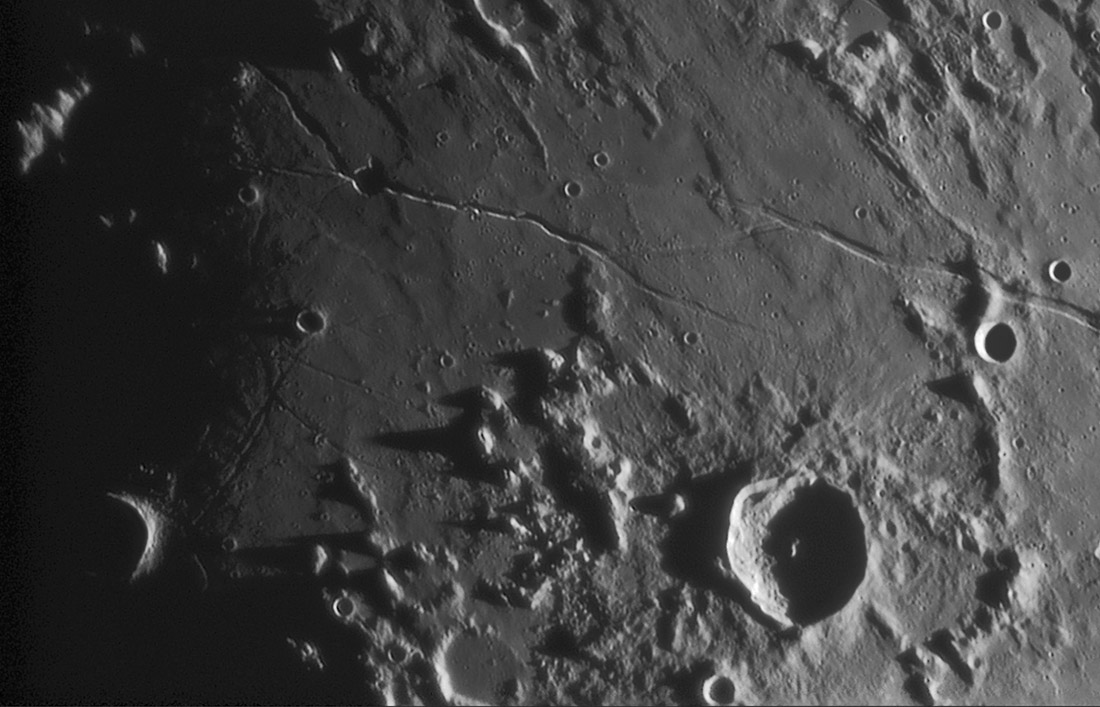September 16, 2017
Triple Junction
Originally published March 3, 2008

image by Stefan Lammel
Three of the Moon's most famous rille systems come together in this excerpt of a new low-Sun mosaic from Stefan. Shadows shroud Triesnecker at bottom left but some of its narrow rilles with a rectilinear pattern point north toward rimless Hyginus and its famous clock-hand rilles. And just where the eastern end of the Hyginus Rille becomes shallow, an even weaker branch of the Ariadaeus Rille connects with it. No one understands the relationships between these rille families, but because some parts of them are roughly radial to the Imbrium Basin it seems likely that the basin somehow influenced them. Stefan's dramatic image shows rilles previously seen or discovered in views by François Emond and view shows that the smooth material is dark and thus is real mare material. The slightly brighter material was mapped by the US Geological Survey as Cayley Formation, which was ultimately interpreted as basin ejecta. The mare material is younger than the Cayley, thus covering the Ariadaeus Rille, with only a few hints of the rille's existence, The mare patch north of the rille is so distinctive that it was given a designation - Hyginus Z. Stefan's image reveals a 10 km wide dome with two tiny near-summit pits on the north side of Z.
Chuck Wood
Technical Details
13-Feb-08 18:08UT. 10in f4.8 Newtonian + Infinity 2-1M
Related Links
Rükl plate 34
Yesterday's LPOD: Smoothered
Tomorrow's LPOD: No News is Bad News
COMMENTS
(1) I think it's worth noting that in addition to using the right telescope and photo equipment, getting an image like this of the waxing Moon requires planning and good timing. I believe the terminator moves at about 12 mph, so there is just a relatively brief period when the combination of light and shadow is just right to illustrate rilles and other features. Stefan's images do not happen by accident. Good work!
When you think about it, there are literally thousands of images that can be taken at different magnifications all along the terminator, from top to bottom, as it moves across the face of the Moon. And the angle of light can come either from the rising sun or setting sun as the Moon waxes and wanes moment by moment.
--Bill
COMMENTS?
Register, Log in, and join in the comments.



